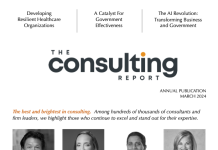As the world emerges from the global COVID-19 pandemic, governments are looking to reshape themselves to better protect their citizens and prevent another global disaster of a similar magnitude from happening again.
1. Many government leaders are focusing more on climate change and particularly on climate resilience—being able to survive the coming climate crisis that they have acted too slowly and ineffectually to prevent.
2. Governments are attempting to future-proof their labor forces by making changes to education, skills training, credentialing, and employment frameworks. The pandemic, just like recent dramatic technological advances, fundamentally changed the labor landscape and widened the skills mismatch and demand-supply gap for many jobs, and governments are attempting to bring labor policies in line with this new reality.
3. In response to supply chain problems that are creating shortages for both suppliers and consumers around the world, many governments are encouraging companies within their borders to reshore critical supply chains in order to reduce their dependence on foreign, potentially adversarial, countries. If reshoring isn’t possible, nations are often “friend-shoring,” or creating a network of trusted suppliers from friendly countries.
4. Governments are scrambling to catch up to the current data-fueled world in which we live. For this, they will need underlying infrastructure—such as cloud and advanced data management tools—that most do not currently possess.
5. Governments are attempting to break down barriers between government agencies and eliminate the siloing effect that has taken root, so that it becomes easier to address problems, deliver services, and achieve results collectively.
6. Governments are acknowledging that the private sector can do many things more quickly and effectively than it can, and they are acting as innovation catalysts—enabling, funding, convening, and integrating. They are linking external innovation capabilities to public sector entities to solve their problems or to advance next-gen tech.
7. Governments are helping to foster global health partnerships, collaborating with international organizations to develop the capability to detect and predict outbreaks and head them off before they spread.
8. Governments are working to extend access to digital tools to all. The need for this became apparent with the rise of remote work, virtual classes, and telehealth appointments, and governments are trying to bridge the divide and make technology available and affordable for everyone.
9. Governments are working to become more inclusive so that the marginalized communities that could use their help the most receive important messages and can access the services they need.
10. Governments are reimaging how they care for their citizens, and social care leaders are attempting to integrate data across multiple sources to develop early interventions from a human-centered mindset.
The most important time to act to prevent future disasters is always right now. Only time will tell whether the efforts governments around the world are currently making will be enough to stave off catastrophe in the future.

























